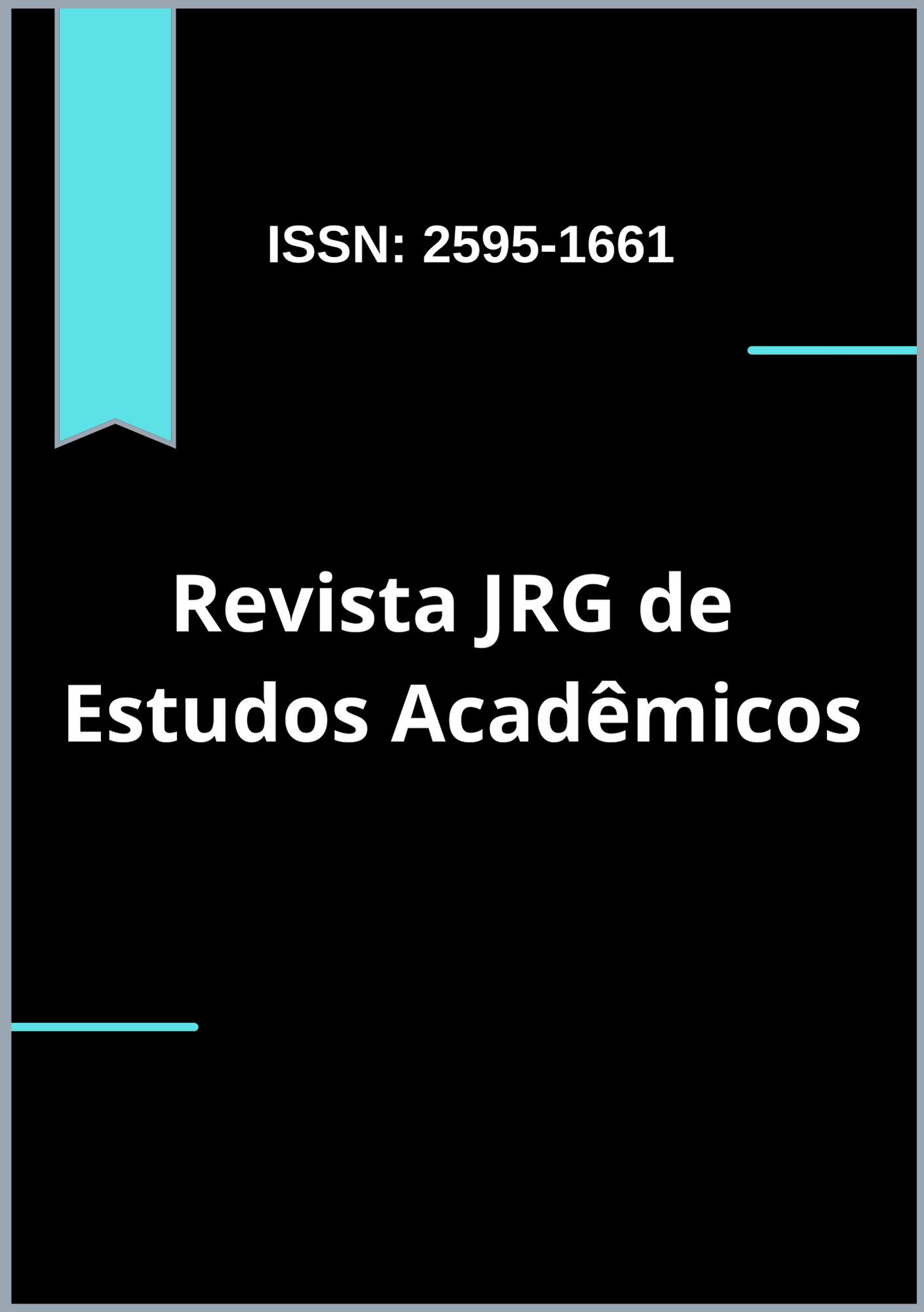Abordagens fisioterapêuticas no tratamento de lesões do ligamento cruzado anterior
DOI:
https://doi.org/10.55892/jrg.v7i15.1547Palavras-chave:
LCA, Fisioterapia, Lesão LCA, Treinamento de Resistência, Qualidade de VidaResumo
A lesão do ligamento cruzado anterior (LCA) é uma das lesões mais comuns no joelho, frequentemente ocorrendo em atletas, mas também em indivíduos não atléticos. Essa condição pode levar a dor crônica, limitação da função física e impacto significativo na qualidade de vida. A reabilitação adequada é essencial para restaurar a funcionalidade do joelho e permitir que os pacientes retornem às suas atividades diárias ou esportivas. As intervenções fisioterapêuticas têm se mostrado eficazes na recuperação após lesões do LCA, sendo diversificadas e adaptadas às necessidades específicas dos pacientes. Esta revisão sistemática foi conduzida com o objetivo de compilar e analisar a literatura existente sobre as intervenções fisioterapêuticas para o tratamento de lesões do LCA. Foram selecionados 13 estudos que atenderam aos critérios de inclusão, dos quais seis foram destacados em uma tabela que resume suas principais características, incluindo autor, ano, objetivo, metodologia, intervenções realizadas e resultados. As intervenções analisadas incluíram exercícios de fortalecimento muscular, alongamentos e técnicas de relaxamento, bem como abordagens que combinam diferentes métodos terapêuticos. Os resultados demonstraram melhorias significativas na intensidade da dor, força muscular e flexibilidade, além da redução de sintomas relacionados, como fadiga e limitações funcionais. A eficácia das intervenções foi influenciada por fatores como a técnica utilizada, a duração do tratamento e a adesão dos pacientes aos programas de reabilitação. Esses achados enfatizam a importância de um tratamento individualizado e a necessidade de mais pesquisas sobre os efeitos a longo prazo das abordagens fisioterapêuticas em pacientes com lesões do LCA.
Downloads
Referências
ALSHEHRI YS, et.al. Current Rehabilitation Practices and Return to Sports Criteria After Anterior Cruciate Ligament Reconstruction: A Survey of Physical Therapists in Saudi Arabia. J Sport Rehabil. 2023 Dec 18;33(2):114-120. doi: 10.1123/jsr.2023-0260. PMID: 38109883.
CHMIELEWSKI TL, et.al. Low- Versus High-Intensity Plyometric Exercise During Rehabilitation After Anterior Cruciate Ligament Reconstruction. Am J Sports Med. 2016 Mar;44(3):609-17. doi: 10.1177/0363546515620583. Epub 2016 Jan 21. PMID: 26797700.
CULVENOR AG, et.al. Rehabilitation after Anterior Cruciate Ligament and Meniscal Injuries: A Best-Evidence Synthesis of Systematic Reviews for the OPTIKNEE Consensus. Br J Sports Med. 2022 Dec;56(24):1445-1453. doi: 10.1136/bjsports-2022-105495. Epub 2022 Jun 29. PMID: 35768181; PMCID: PMC9726950.
FAILLA MJ, et.al. Controversies in knee rehabilitation: anterior cruciate ligament injury. Clin Sports Med. 2015 Apr;34(2):301-12. doi: 10.1016/j.csm.2014.12.008. Epub 2015 Feb 27. PMID: 25818715; PMCID: PMC4379426.
HAUER AV, et.al. Neuromuscular Electrical Stimulation Is Effective in Strengthening the Quadriceps Muscle After Anterior Cruciate Ligament Surgery. Knee Surg Sports Traumatol Arthrosc. 2018 Feb;26(2):399-410. doi: 10.1007/s00167-017-4669-5. Epub 2017 Aug 17. PMID: 28819679.
JENKINS SM, et.al. Rehabilitation After Anterior Cruciate Ligament Injury: Review of Current Literature and Recommendations. Curr Rev Musculoskelet Med. 2022 Jun;15(3):170-179. doi: 10.1007/s12178-022-09752-9. Epub 2022 Apr 6. PMID: 35381974; PMCID: PMC9107547.
KARIMIJASHNI M, SARVESTANI FK, YOOSEFINEJAD AK. The Effect of Contralateral Knee Neuromuscular Exercises on Static and Dynamic Balance, Knee Function, and Pain in Athletes Who Underwent Anterior Cruciate Ligament Reconstruction: A Single-Blind Randomized Controlled Trial. J Sport Rehabil. 2023 Mar 14;32(5):524-539. doi: 10.1123/jsr.2021-0380. PMID: 36918020.
KIRKBY SHAW K, et.al. Fundamental Principles of Rehabilitation and Musculoskeletal Tissue Healing. Vet Surg. 2020 Jan;49(1):22-32. doi: 10.1111/vsu.13270. Epub 2019 Jul 4. PMID: 31271225; PMCID: PMC6973127.
NELSON C, et.al. Postoperative Rehabilitation of Anterior Cruciate Ligament Reconstruction: A Systematic Review. Sports Med Arthrosc Rev. 2021 Jun 1;29(2):63-80. doi: 10.1097/JSA.0000000000000314. PMID: 33972483.
PERRIMAN A, LEAHY E, SEMCIW AI. The Effect of Open- Versus Closed-Kinetic-Chain Exercises on Anterior Tibial Laxity, Strength, and Function Following Anterior Cruciate Ligament Reconstruction: A Systematic Review and Meta-analysis. J Orthop Sports Phys Ther. 2018 Jul;48(7):552-566. doi: 10.2519/jospt.2018.7656. Epub 2018 Apr 23. PMID: 29685058.
VIDMAR MF, et.al. Isokinetic Eccentric Training Is More Effective Than Constant Load Eccentric Training for Quadriceps Rehabilitation Following Anterior Cruciate Ligament Reconstruction: A Randomized Controlled Trial. Braz J Phys Ther. 2020 Sep-Oct;24(5):424-432. doi: 10.1016/j.bjpt.2019.07.003. Epub 2019 Jul 16. PMID: 31351901; PMCID: PMC7563799.
VAN MELICK N, et.al. Evidence-Based Clinical Practice Update: Practice Guidelines for Anterior Cruciate Ligament Rehabilitation Based on a Systematic Review and Multidisciplinary Consensus. Br J Sports Med. 2016 Dec;50(24):1506-1515. doi: 10.1136/bjsports-2015-095898. Epub 2016 Aug 18. PMID: 27539507.
KOTSIFAKI R, et.al. Aspetar Clinical Practice Guideline on Rehabilitation After Anterior Cruciate Ligament Reconstruction. Br J Sports Med. 2023 May;57(9):500-514. doi: 10.1136/bjsports-2022-106158. Epub 2023 Feb 2. PMID: 36731908.
Downloads
Publicado
Como Citar
Edição
Seção
ARK
Licença

Este trabalho está licenciado sob uma licença Creative Commons Attribution 4.0 International License.










































